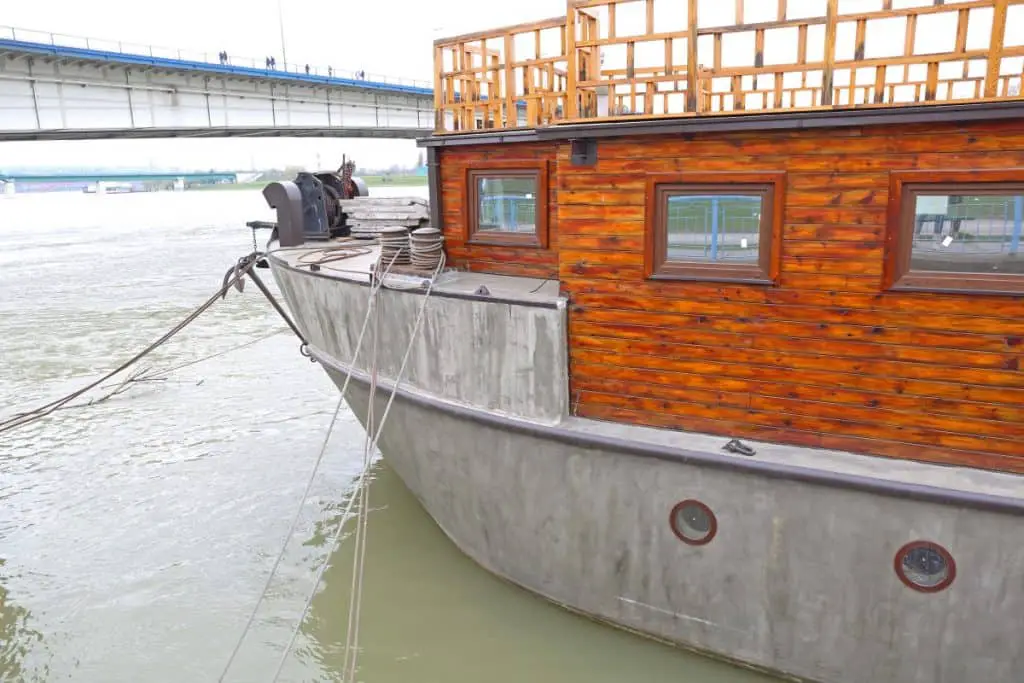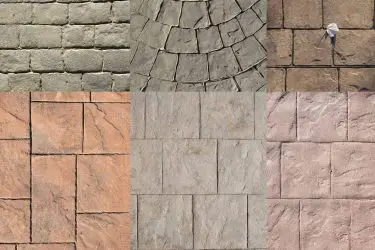During World War I, President Woodrow Wilson approved the construction of 24 ships made from concrete due to the steel shortage. Only 12 ships were ever built, but they were used just like any other ship. It may come as a surprise to many that it is possible to make concrete float on water. It’s not magic, it’s actually science!
Concrete can float when it is molded and spread out into the shape of a boat or hollow enough so that it has less density than water it displaces. Buoyancy is when “any object, wholly or partially immersed in a fluid, is buoyed up by a force equal to the weight of the fluid displaced by the object.”
The fact that concrete can be made to float on the surface of the water is fascinating, to say the least. To understand how concrete can have less density than water, first, we need to go back to the basics of buoyancy – way, way back to ancient Greek times!

Archimedes and Buoyancy
Archimedes of Syracuse is credited for discovering the law of buoyancy back in the third century B.C.E. Legend has it that he discovered it in his bathtub, but whether or not that’s the case, this principle became an important scientific fact even thousands of years later.
Archimedes’ principal states:
Any object, wholly or partially immersed in fluid, is buoyed up by a force equal to the weight of the fluid displaced by the object.
In other words, the force of buoyancy is directly equal to the weight of the fluid that was displaced by an object. See the image below.

The above image demonstrates how a 9-pound block is dropped and submerged into a container of fluid. The displaced fluid shown in the smaller container is 3-pounds of fluid and is equal to the amount of buoyancy that is holding up the block in the fluid.
Mathematically, Archimedes’ principle looks like this:
Weight – weight of displaced fluid = apparent immersed weight
In the picture above the equation works out as the following:
9 pounds – 3 pounds = 6 pounds
However, whether something will sink or float in water depends on the density of the object. Extremely dense objects, such as clumps of steel, will sink to the bottom. Below is the formula to find the density of an object:
Density = Mass ÷ Volume
Given what we know, we can determine the density of an object dropped into fluid relative to the density of the fluid:
(Density of object ÷ density of fluid) = (weight of object ÷ weight of displaced fluid)
In the context of concrete, if its density is lower than the total density of water, it will float rather than sink. Most concrete will sink to the bottom of a container of water. Water naturally has a density of 62.4 lbs/ft3 and concrete has a density of about 150 lbs/ft3. However, you can change the apparent density of the concrete by changing the concrete’s volume.
To change the concrete’s volume is to shape the hull of a boat. This shape allows the concrete to displace a volume of water that is directly equal to the weight of the concrete. Nowadays, massive warships are made from steel, which is a super-dense material that sinks on its own, but floats when their volume is changed to form a boat-shape.

Use The Correct Mix Of Concrete And Aggregates
The civil engineering students at ASCE National Concrete Canoe Competition have been using concrete to create their canoes for years. They have a unique way of mixing their concrete with aggregates other than gravel or fine-grained sand, which weighs down the concrete considerably.
Instead of gravel or sand, they mix in fine glass beads into the concrete to make the overall mixture less dense. The glass beads themselves are each about 10% the density of water and allows the canoes to float, even when they’re submerged below water.

The competition challenges these students to create canoes made out of the best ingredients that make them durable, lightweight, as well as pleasing to look at. The changes they make to the ingredients naturally make the concrete mix thicker in consistency, and rather than pour the cement, they will hand-pack it into the shape of a canoe.
You don’t need to change the composition of the concrete mix in order for it to float. A concrete mix with sand and gravel aggregates can float just as well as one with glass beads. The ingredients need to be mixed well, however, and you will need to create a mold in the form of a boat. (See here for more instructions.)



